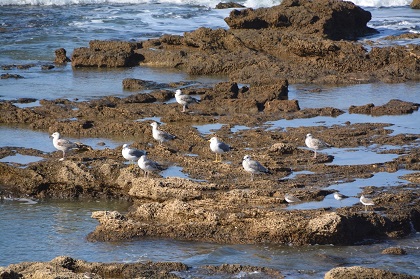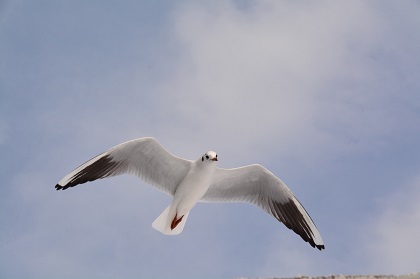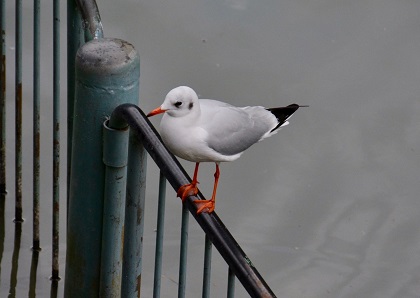Seagulls, sky rats?
The Hebrew term shajaph, translated as “seagull” in the Old Testament, literally means “thinness”.
03 NOVEMBER 2019 · 11:00 CET

(…) the horned owl, the screech owl, the gull, any kind of hawk; (Lv. 11:16)
The Hebrew term shajaph, translated as “seagull” in the Old Testament, literally means “thinness”, and alludes to the slim appearance of these birds. The term only appears twice: in Leviticus 11 v 16 and Deuteronomy 14 v 15, in both cases in relation to the lists of unclean animals. On the coasts of Israel and around its inland lakes there are still many different species of sea-birds, including gulls and terns.
One of the largest species of such birds is the Caspian gull (Larus cachinnans), similar to the north European silver gull, except that it has yellow legs, and a yellow beak with a large red mark at the end of it. It is a very common species all along the Mediterranean coast of the Holy Land. Up to 58 centimetres long, it feeds on fish, molluscs or other marine invertebrates, which it gets both from the water and the ground.

A group of Caspian gulls (Larus cachinnans) resting on the rocks of the Mediterranean coast at Caesaria (Israel).
The second species of gull that lives in Israel is smaller than the Caspian gull, only reaching a maximum length of 38 cm. It is the black-headed gull, or laughing gull, (Larus ridibundus), whose Latin name refers to its strident, guttural and piercing call, somewhat reminiscent of human laughter. It is a small very white gull with what seems like a black hood on its head during the mating season, but during the rest of the year this hood is pale, with a dark stain resembling an ear.
The lower part of its wing is dark and seems to vibrate in the light. It is a bird that spends a lot of time on the ground, and is not confined to the sea or the coast but can also be found around the continental bodies of fresh water, such as the Sea of Galilee.

The flight of laughing gulls (Larus ridibundus) looks majestic as they follow the boats on the Sea of Galilee in search of bread crumbs that tourists hurl into the air towards them. They can perform spectacular feats of acrobatics in their efforts to catch them.

The laughing gull (Larus ridibundus) is a species that comes very close to populated enclaves. This specimen is perched on the railing which people getting baptised in the river Jordan lean on.
The food sources of gulls are surprisingly varied, basically consisting of anything that can conceivably be eaten, as well as small varieties of marine fauna. They even eat certain land organisms such as snails, slugs, mica, rats, birds, ducks, pigeons, the chicks of other species of fowl, its own eggs and even carrion. Nowadays, certain species of gulls can be found in land-fill sites, and have therefore been called “sky rats”.
Of course it is hardly surprising that the Jews should have had no trouble accepting the Levitical prohibitions according to which such birds had to be included in the list of unclean animals.
Published in: Evangelical Focus - Zoe - Seagulls, sky rats?
